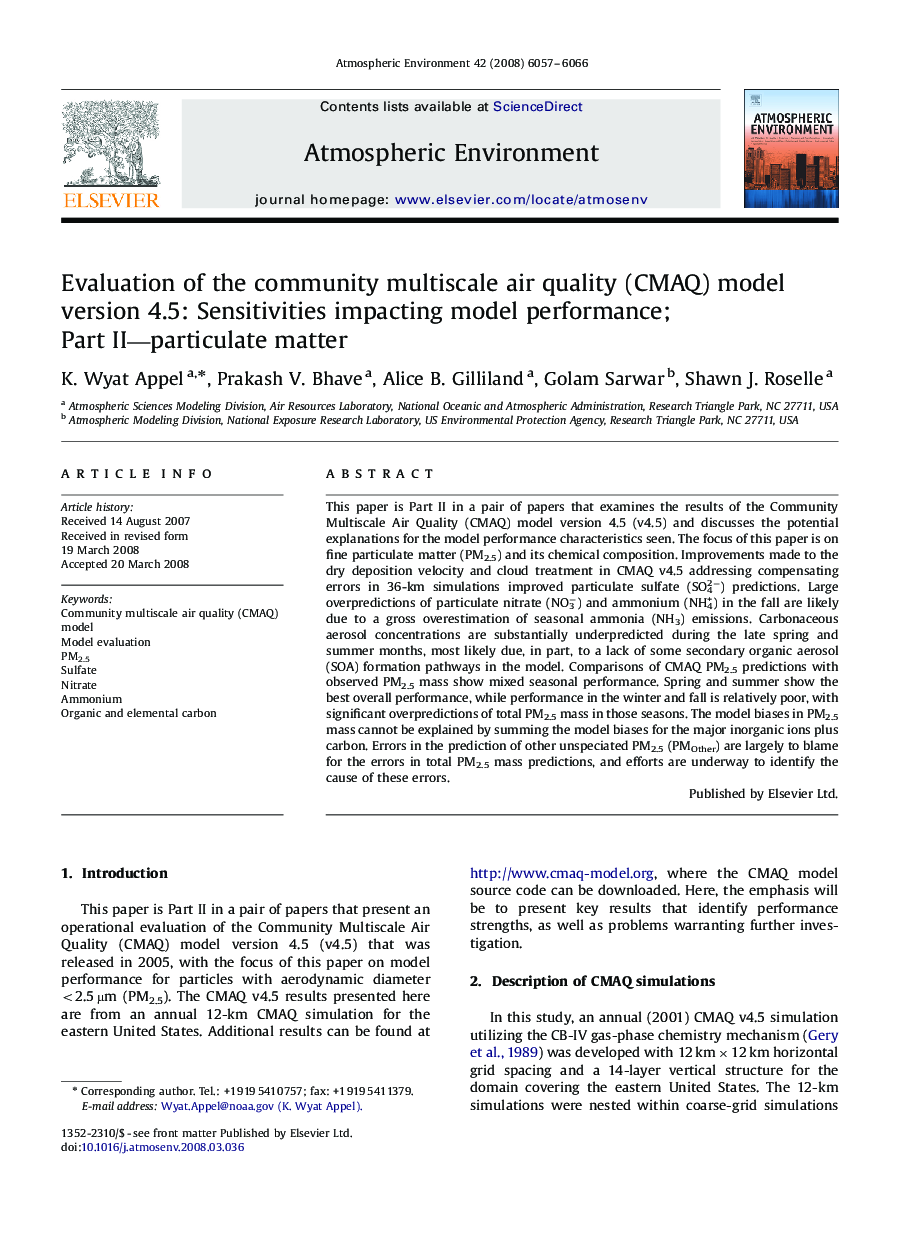| Article ID | Journal | Published Year | Pages | File Type |
|---|---|---|---|---|
| 4442766 | Atmospheric Environment | 2008 | 10 Pages |
This paper is Part II in a pair of papers that examines the results of the Community Multiscale Air Quality (CMAQ) model version 4.5 (v4.5) and discusses the potential explanations for the model performance characteristics seen. The focus of this paper is on fine particulate matter (PM2.5) and its chemical composition. Improvements made to the dry deposition velocity and cloud treatment in CMAQ v4.5 addressing compensating errors in 36-km simulations improved particulate sulfate (SO42−) predictions. Large overpredictions of particulate nitrate (NO3−) and ammonium (NH4+) in the fall are likely due to a gross overestimation of seasonal ammonia (NH3) emissions. Carbonaceous aerosol concentrations are substantially underpredicted during the late spring and summer months, most likely due, in part, to a lack of some secondary organic aerosol (SOA) formation pathways in the model. Comparisons of CMAQ PM2.5 predictions with observed PM2.5 mass show mixed seasonal performance. Spring and summer show the best overall performance, while performance in the winter and fall is relatively poor, with significant overpredictions of total PM2.5 mass in those seasons. The model biases in PM2.5 mass cannot be explained by summing the model biases for the major inorganic ions plus carbon. Errors in the prediction of other unspeciated PM2.5 (PMOther) are largely to blame for the errors in total PM2.5 mass predictions, and efforts are underway to identify the cause of these errors.
